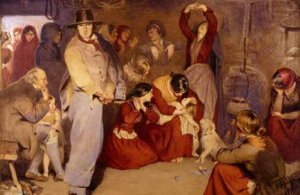“Bríg came and keened for her son. At first she shrieked, in the end she wept. Then for the first time weeping and lamentation were heard in Ireland .” The quotation comes from the ancient Irish text, Lebor Gabála Érenn , or The Book of Invasions , and describes what has been referred to as the first keening cry heard in Ireland. Brigid, seeing her dead son, is overcome by grief and begins to wail and cry in what would become a keen. The term ‘keening’ originates from the Gaelic caoineadh which means ‘to cry’.
Keening A Safe Passage
Keening, to give an initial simple description, is a form of death wailing usually expressed by women which is found in many indigenous cultures stretching from Europe to the Americas and throughout Australia, Africa and Asia. In certain traditions keening takes the form of wordless cry, and becomes an emotional outpouring of sounds, but in a diversification there is very often a recounting of the deceased person’s deeds and traits. This might be a plea to the spirit world or deities to look kindly upon the departed person, but there was also an honoring aspect to these incantations and an attempt to sing a scar upon the memory of those left behind in order to never forget what they had lost.
Keening, to give an initial simple description, is a form of death wailing usually expressed by women which is found in many indigenous cultures stretching from Europe to the Americas and throughout Australia, Africa and Asia. In certain traditions keening takes the form of wordless cry, and becomes an emotional outpouring of sounds, but in a diversification there is very often a recounting of the deceased person’s deeds and traits. This might be a plea to the spirit world or deities to look kindly upon the departed person, but there was also an honoring aspect to these incantations and an attempt to sing a scar upon the memory of those left behind in order to never forget what they had lost.
Read more: Ancient Origins
Ask me anything
Explore related questions





